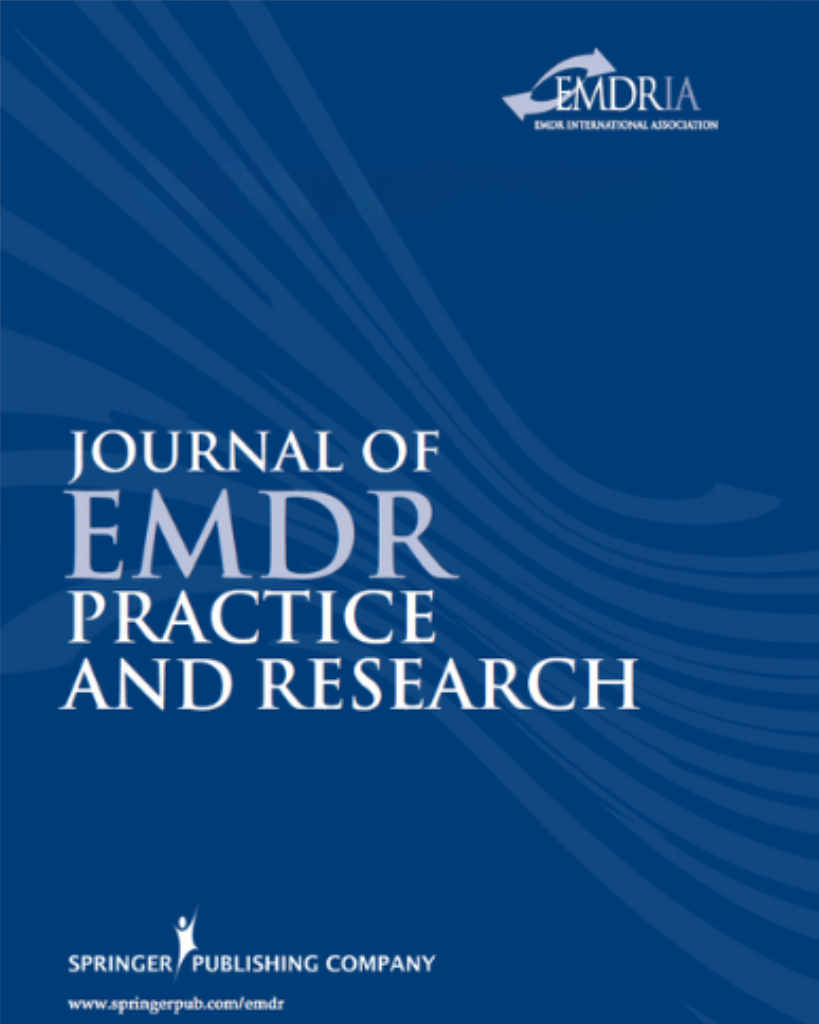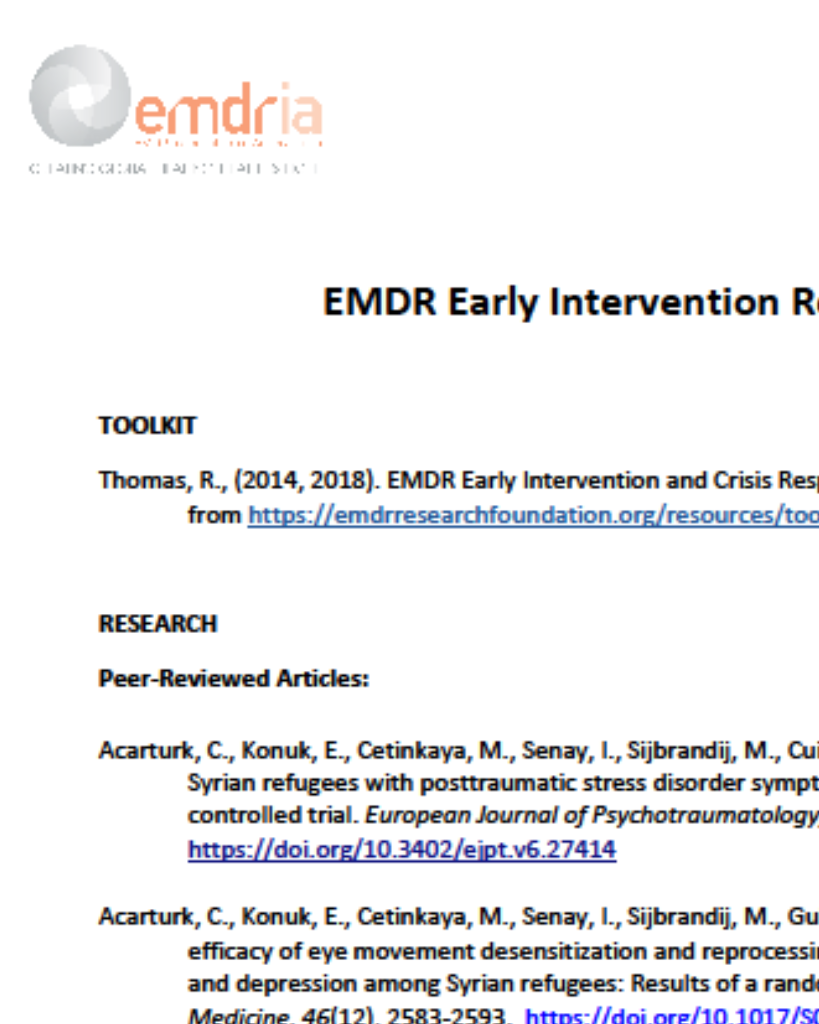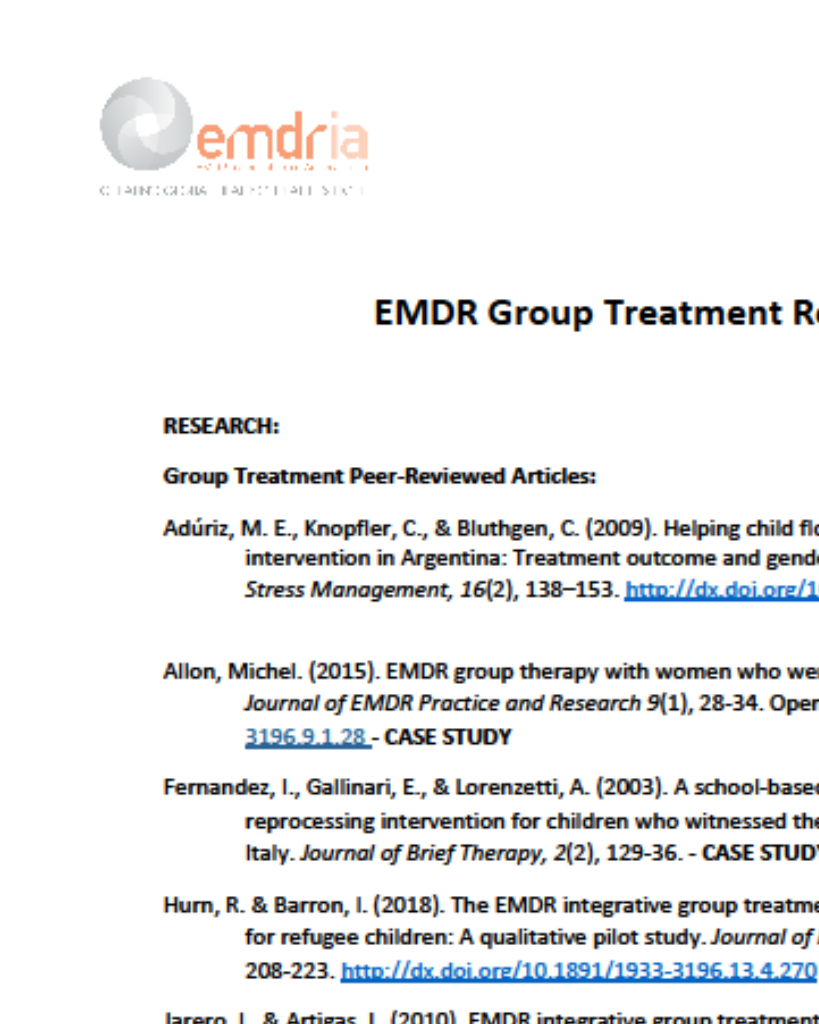The EMDR Protocol for Recent Critical Incidents: Brief Report of an Application in a Human Massacre Situation
One session of EMDR Protocol for Recent Critical Incidents (EMDR-PRECI) produced significant improvement on The Impact of Event Scale (IES).
Article Abstract
“This ongoing field study was conducted subsequent to the discovery of clandestine graves with 218 bodies recovered in the Mexican state of Durango in April 2011. A preliminary psychometric assessment was conducted with the 60 State Attorney General employees who were working with the corpses to establish a triage criterion and provide baseline measures. The Impact of Event Scale (IES) and the short posttraumatic stress disorder (PTSD) rating interview were administered, and the 32 individuals whose scores indicated moderate-to-severe posttraumatic stress and PTSD symptoms were treated with the eye movement desensitization and reprocessing (EMDR) Protocol for Recent Critical Incidents (EMDR-PRECI). Participants were assigned to two groups: immediate treatment (severe scores) and waitlist/delayed treatment (moderate scores). Each individual client session lasted between 90 and 120 minutes. Results showed that one session of EMDR-PRECI produced significant improvement on self-report measures of posttraumatic stress and PTSD symptoms for both the immediate treatment and waitlist/delayed treatment groups. This study provides preliminary evidence in support of the protocol’s efficacy in a natural setting of a human massacre situation to a group of traumatized adults working under extreme stressors. More controlled research is recommended to evaluate further the protocol’s efficacy.”
—Description from publisher
Article Access
Open Access
Jarero, I., & Uribe, S. (2011). The EMDR Protocol for Recent Critical Incidents: Brief Report of an Application in a Human Massacre Situation. Journal of EMDR Practice and Research, 5(4), 156–165. https://doi.org/10.1891/1933-3196.5.4.156
About the Journal
The Journal of EMDR Practice and Research is a peer-reviewed publication devoted to integrative, state-of-the-art papers about Eye Movement Desensitization and Reprocessing. It is a broadly conceived interdisciplinary journal that stimulates and communicates research and theory about EMDR, and their application to clinical practice. The Journal of EMDR Practice and Research is the Official Publication of the EMDR International Association.
Date
December 1, 2011
Creator(s)
Ignacio Jarero, Susana Uribe
Topics
Tragedies
Client Population
First Responders/Healthcare Workers
Practice & Methods
EMDR Early Intervention, Group
Extent
10 pages
Publisher
Springer Publishing Company
Rights
Copyright © 2011 EMDR International Association
APA Citation
Jarero, I., & Uribe, S. (2011). The EMDR Protocol for Recent Critical Incidents: Brief Report of an Application in a Human Massacre Situation. Journal of EMDR Practice and Research, 5(4), 156–165. https://doi.org/10.1891/1933-3196.5.4.156
Series
5
Installment
4
Audience
EMDR Therapists
Language
English
Content Type
Article, Peer-Reviewed
Original Source
Journal of EMDR Practice and Research
Access Type
Open Access




